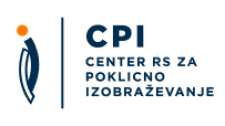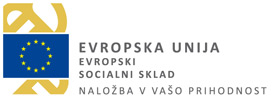Archived
Diplomirani inženir multimedije (un)/diplomirana inženirka multimedije (un)
Selected qualifications
| Name of qualification | Name of qualification: Diplomirani inženir multimedije (un)/diplomirana inženirka multimedije (un)Add to comparison |
|---|---|
| Translated title (no legal status) | Translated title: Academic bachelor's degree in multimedia |
| Type of qualification | Type of qualification: Academic bachelor's degree |
| Category of qualification | Category of qualification: Educational Qualification |
| Type of education | Type of education: Academic bachelor's education |
| Duration |
Duration of education:
3 years
|
| Credits | Credits: 180 credits |
| Admission requirements |
Entry conditions:
|
| ISCED field |
Field:
Information and Communication Technologies (ICTs)
|
| ISCED subfield | subfield: inter-disciplinary programmes and qualifications involving information and communication technologies (icts) |
| Qualification level |
SQF Level:
SQF 7 |
The qualification holder will be able to:
(general competences)
- define, understand and creatively address problems in the broader multimedia field,
- think critically on the basis of analysis and synthesis,
- demonstrate knowledge of systems,
- undertake research and planning,
- show professional, environmental and social responsibility,
- engage in active technical communication in written and oral form,
- make optimal use of information and communication technologies and develop them,
- autonomously keep abreast of the latest achievements and acquire new knowledge,
- work in a team with experts from engineering and non-engineering fields.
(subject-specific competences)
- demonstrate basic and specialised knowledge in the field of telecommunications and
- information systems,
- plan and implement multimedia systems,
- demonstrate understanding of the nature of human–machine interaction,
- demonstrate understanding of the basics of ICT and the social role of information literacy,
- demonstrate familiarity with the fundamental laws of the design and creation of multimedia content,
- demonstrate familiarity with the functioning of multimedia devices,
- acquire knowledge from complementary technical fields and the business sector
- and demonstrate that they understand it.
Students' knowledge is assessed by means of practical exercises and seminar papers, and also via products, projects, performances, services, etc. and by examinations. Examination performance is scored as follows: 10 (excellent); 9 (very good: above-average knowledge but with some mistakes); 8 (very good: solid results); 7 (good); 6 (adequate: knowledge satisfies minimum criteria); 5–1 (inadequate). In order to pass an examination, a candidate must achieve a grade between adequate (6) and excellent (10).
Students of the first-cycle academic programme in Multimedia may enrol in the second year if they have completed first-year course units totalling at least 60 ECTS credits before the enrolment date.
Students of the first-cycle academic programme in Multimedia may enrol in the third year if they have completed all first-year course units (60 credits) and second-year course units totalling at least 60 ECTS credits before the enrolment date.
Second-cycle master's study programmes (SQF level 8)
In order to complete the programme, students must complete all course units prescribed by the study programme, for a total of 180 credits.
Faculty of Electrical Engineering, Faculty of Computer and Information Science, University of Ljubljana
URL
Awarding body URL:Upcoming event
International Conference: 10 years of Slovenian Qualifications Framework
International Conference: 10 years of Slovenian Qualifications Framework Brdo Congress Centre, Predoslje 39, 4000...
© Center RS za poklicno izobraževanje, 2018. All rights reserved
Sitemap General legal notice Cookie Policy Production: ENKI






